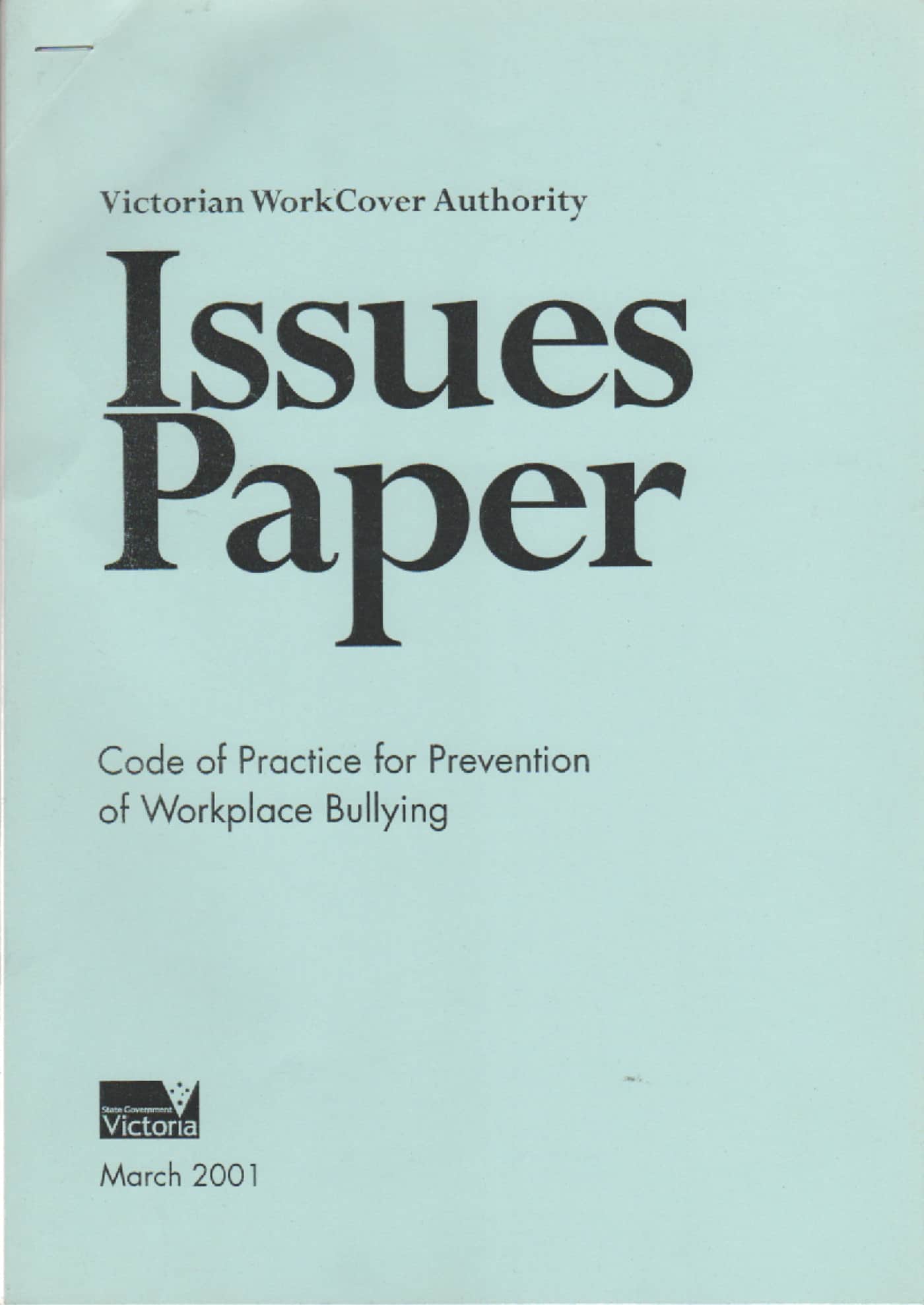Every year, around this time, the mainstream media reports on the findings of employee surveys of the Victorian public service. Each year the statistics on workplace bullying are featured. (The Age newspaper reported on the latest survey on 31 March 2013.) But the approach to an understanding of workplace bullying has changed over the last fifteen years or so. A brief look at the March 2001 Issues Paper on workplace bullying, released by the Victorian Workcover Authority (VWA), is useful to illustrate the degree of change but also the origin of some of the contemporary hazard control themes.
 The VWA Issues Paper was always intended to lead to a formal Code of Practice but due to belligerence from various industry bodies, no code eventuated and Victoria had to make do with a guidance note. This effectively banished workplace bullying to a nice-to-manage rather than an essential element of modern management. Significantly, Safe Work Australia intends to release a model Code of Practice on workplace bullying shortly. Perhaps the employer associations’ attitudes have mellowed. Perhaps it is the decline of trade union influence since 2001.
The VWA Issues Paper was always intended to lead to a formal Code of Practice but due to belligerence from various industry bodies, no code eventuated and Victoria had to make do with a guidance note. This effectively banished workplace bullying to a nice-to-manage rather than an essential element of modern management. Significantly, Safe Work Australia intends to release a model Code of Practice on workplace bullying shortly. Perhaps the employer associations’ attitudes have mellowed. Perhaps it is the decline of trade union influence since 2001.
The Issues Paper roughly defines workplace bullying as:
“…aggressive behaviour that intimidates, humiliates and/or undermines a person or group.” Continue reading “OHS would benefit from a historical perspective on workplace bullying”

 His research has taken him to look at “organisational violence” and in October 2012, he addressed the 3rd International Conference on Violence in Healthcare (the proceedings are available
His research has taken him to look at “organisational violence” and in October 2012, he addressed the 3rd International Conference on Violence in Healthcare (the proceedings are available 